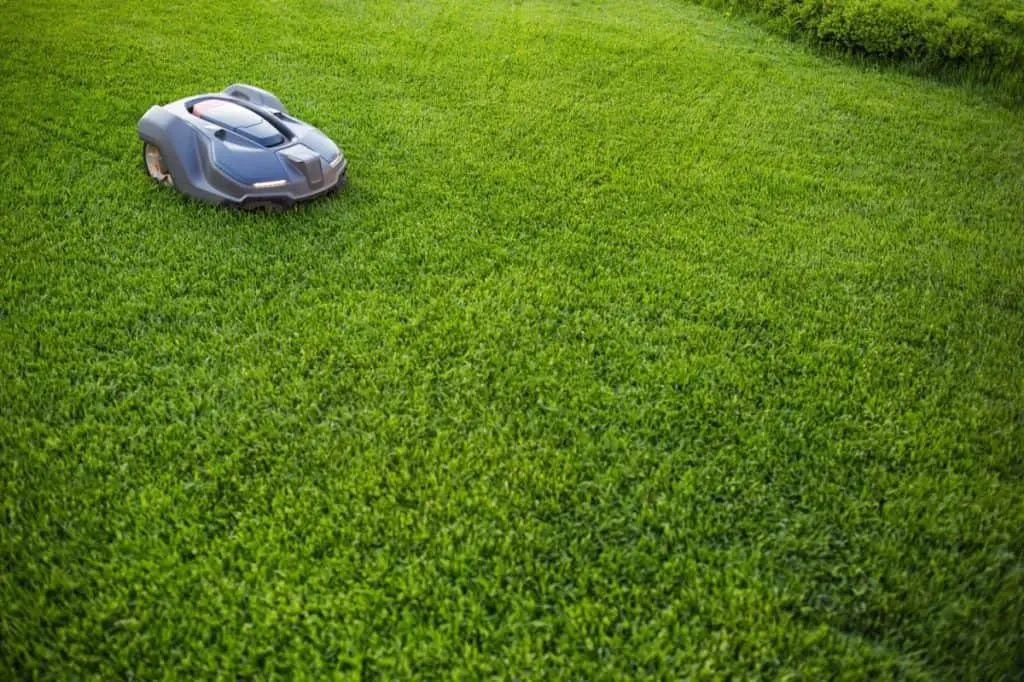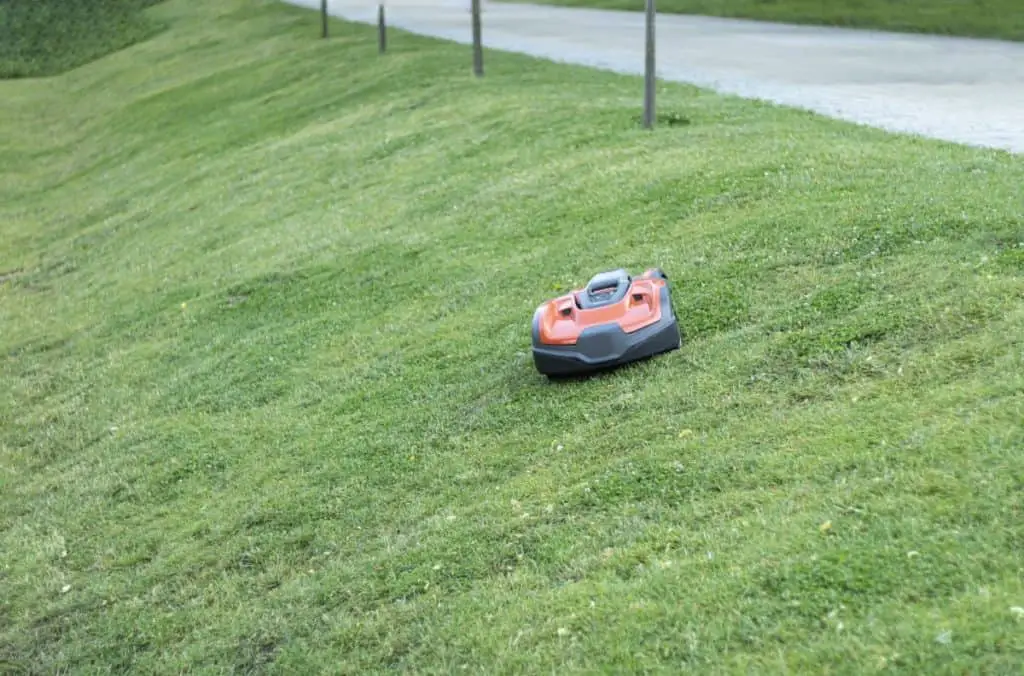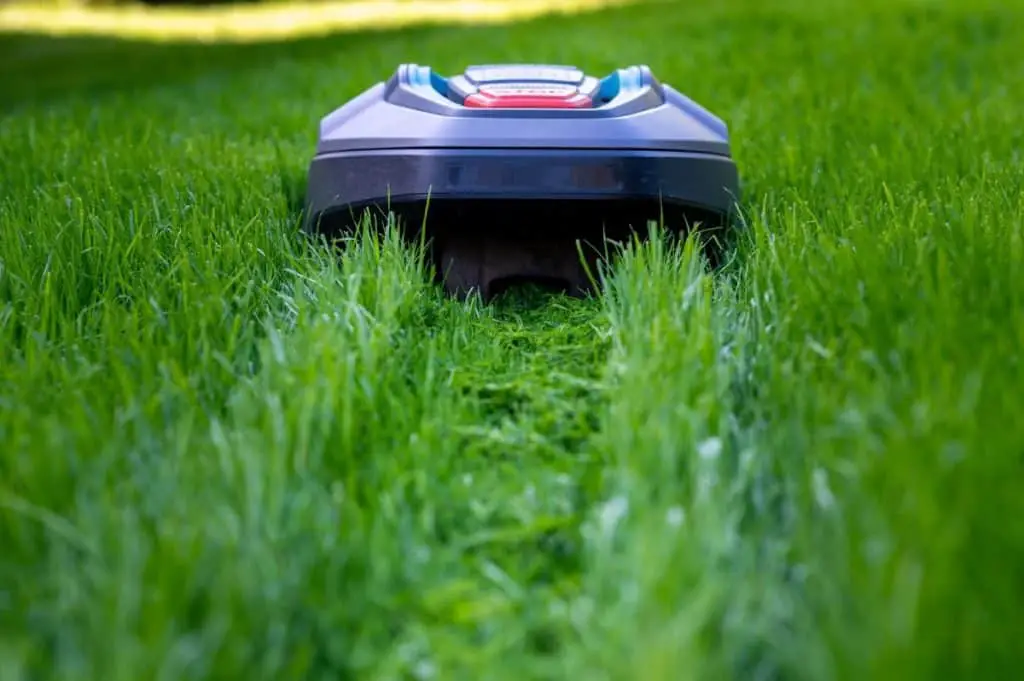Robotic mowers have made lawn mowing less stressful. They are highly efficient units that ensure you always have a great-looking lawn, and you never have to worry about noise or spending money on fuel. But how do these nifty machines navigate as they buzz around your lawn?
Robot mowers navigate randomly or by relying on GPS and reading perimeter wires installed around the lawn. GPS-enabled options create a mental map of the lawn while random navigators rely on perimeter wires as a guide. Users can also manually control the navigation from an app or web interface.
The rest of this article will take a closer look at robotic mower navigation. You’ll have a better understanding of how they work, so you can ensure efficient use of your unit.

The Two Main Types of Robot Mower Navigation
Robot mowers navigate in one of the following two ways:
Random Navigation
Devices designed without elaborate navigation systems have no way to determine what your lawn looks like. They simply drive over the lawn randomly, gradually mowing every corner. The boundary wires keep them in check within the lawn area as they work.
Models equipped with sensors that detect the end of a lawn may not need boundary wires to work, but they still mow the lawn without following any defined pathways.
The downside to this navigation approach is that parts of the lawn that are easy to reach are mowed frequently, even when they have already been mowed.
In contrast, other difficult-to-reach areas get mowed less frequently. So, getting an uneven finish is fairly common if you allow the mower to work independently.
The Gardena 15001-41 Sileno City Robotic Lawn Mower from Amazon.com is a good example here with minimum inconsistencies.
The model provides no-frills cutting, and you can manually take over the navigation via Bluetooth. It can complete a cutting session in around 65 minutes.
Methodical Navigation
As you’ve seen above, random navigation and movement is the most efficient approach for robot mowers. Therefore, many manufacturers have developed options with a defined system for navigating the lawn.
In such designs, the mower is fitted with a GPS navigation system that allows it to know its exact position in the yard at all times.
These units come with a perimeter wire laid across the yard. When you first unbox the robotic mower, it will drive around blindly for a while, using the wire as a rough guide, until it has collected enough coordinates to create a map of the yard in its memory.
You may need to wait for up to four days for this process to finish depending on the complexity and size of the yard.
Using the GPS data collected, the robotic mower now has a good idea of the shape and size of the lawn. It can now also remember the last time it passed over a specific area of the lawn, ensuring an intelligent and efficiently optimized mowing process.
The mower can now target areas it’s yet to reach while avoiding areas it’s already mowed. The learning process continues well beyond the initial four-day acclimatization period. So, the more you use these types of mowers, the higher the overall efficacy.
The Husqvarna Automower 315X Robotic Lawn Mower also on Amazon.com is an excellent choice in this regard. It’s packed with many features, but navigation-wise, it’s seamless thanks to the GPS, Bluetooth, and Cellular connectivity options built-in.

Why Robotic Mowers With Methodic Navigation Is Better
The digital map that robotic mowers acquire through methodic navigation provides a range of benefits. First, the robot mower won’t work for long periods unnecessarily. It’ll focus precisely on the areas that need to be mowed.
With less mowing time, you won’t have to worry about excess energy use and accelerated wear and tear on the blades, battery, and the mower in general.
With a short and defined mowing window, you’ll enjoy better flexibility overall with your scheduling. You know it’ll take exactly X number of minutes to complete the process, so you can send out the mower just before the kids are back from school or as you prepare for the morning commute.
Additionally, since the GPS navigation helps keep the mower from driving too frequently across the same surface, you won’t have to worry about tracks forming all over your lawn after each mowing session.

Extra Features To Aid Navigation in Robotic Mowers
Most robotic lawn mowers are fitted with extra features that help make navigation more efficient. Some of the features include the following:
Collision Detection Systems and Sensors
Robotic mowers have a basic collision detection system that allows them to stop, reverse and continue mowing in another direction when they bump into any obstacles.
Some units with more advanced proximity sensors will see the obstacle before bumping into it. So, the robotic mower will cut until it gets to the edge of the obstacle, then it will reverse.
Some of the sensors feature perimeter wires to keep the mower off certain obstacles (for example, a flower bed or newly planted tree).
Multi-Zone Functionality
Does your garden have multiple lawn areas? You can choose a lawnmower designed to work over multiple areas. The basic principles of the standard lawn area apply here as well.
You’ll need to use a perimeter wire to guide the mower from the primary lawn area to the secondary area through a passage or driveway path. The passage has to be level and wide enough for the mower to navigate.
Final Thoughts
A robotic mower navigates your lawn either by randomly following the guidance of an invisible fence or methodically by also relying on a built-in GPS. It also gets extra help from sensors designed to keep it from running into obstacles while on the mowing path.
By turning off blades and reversing in the face of obstacles, the mower can avoid sustaining damage or injuring pets or small children in its path.
Robotic mowers designed with methodic navigation in mind have machine-learning capabilities, so they become more efficient as they complete more mowing sessions overall.
